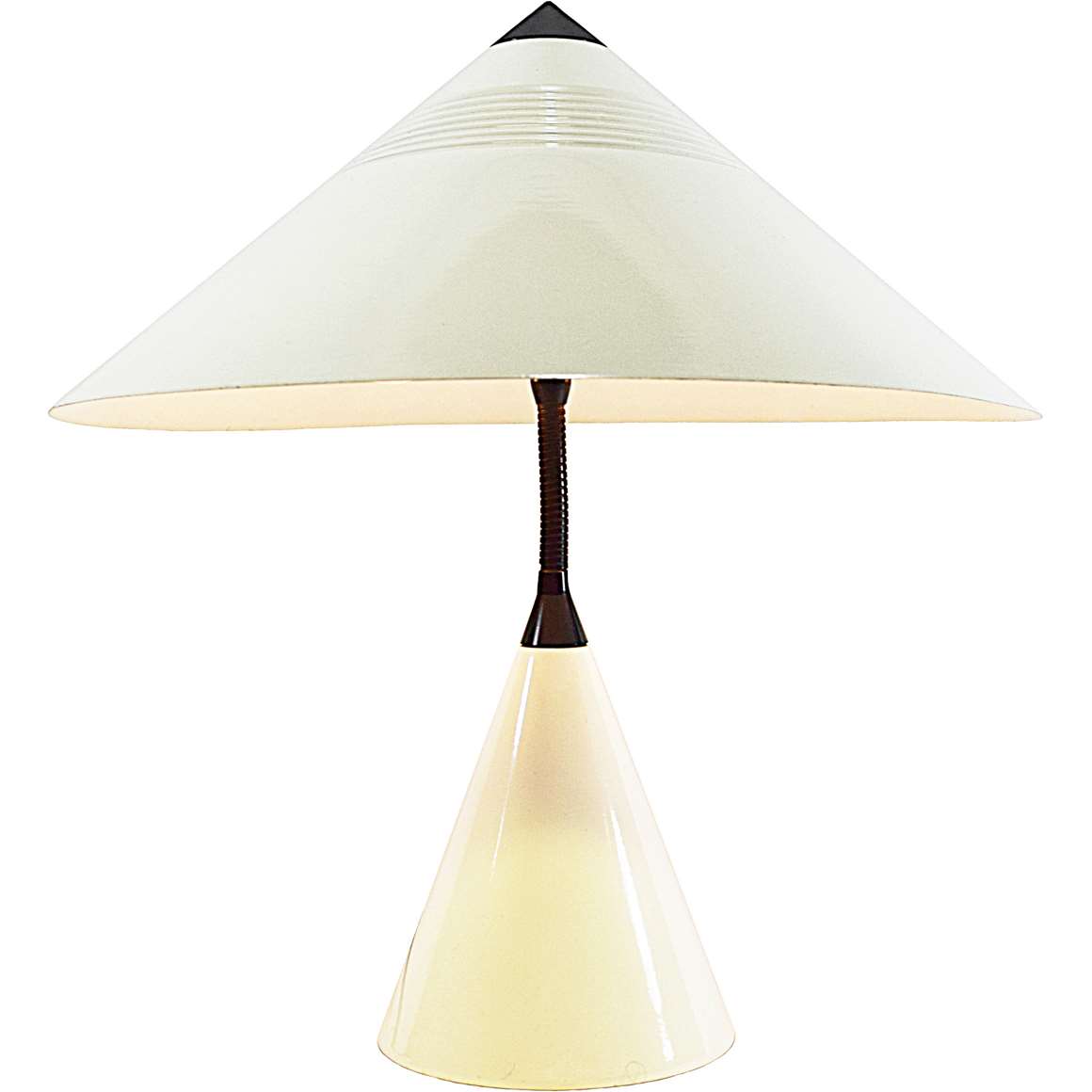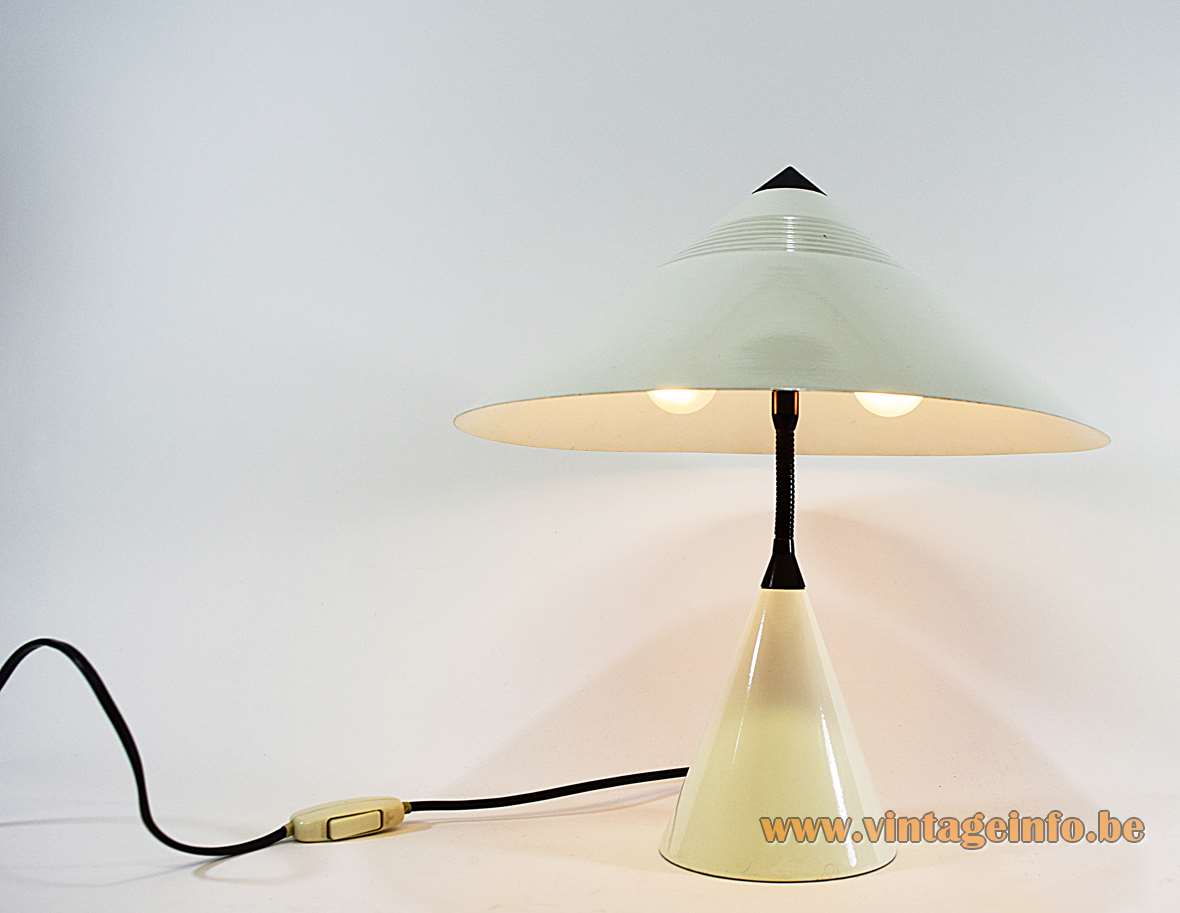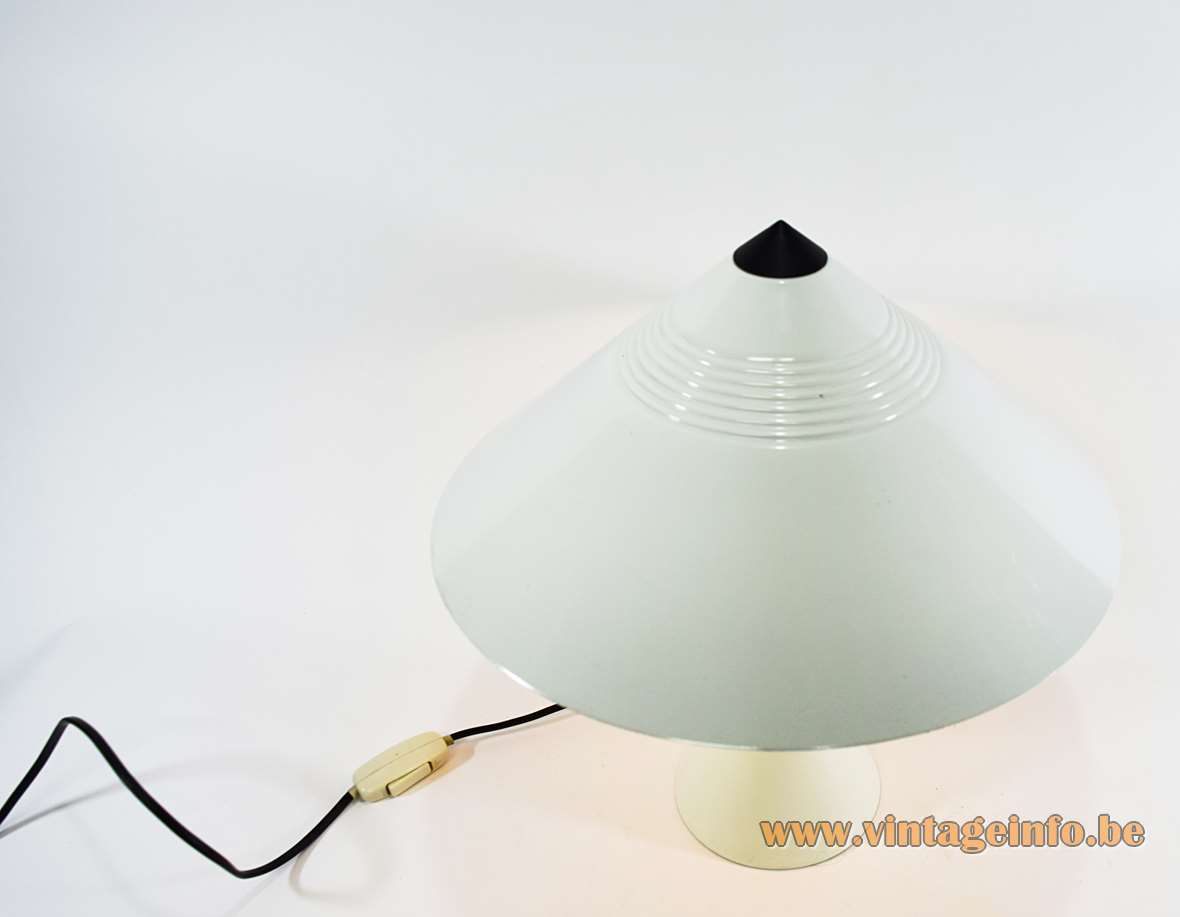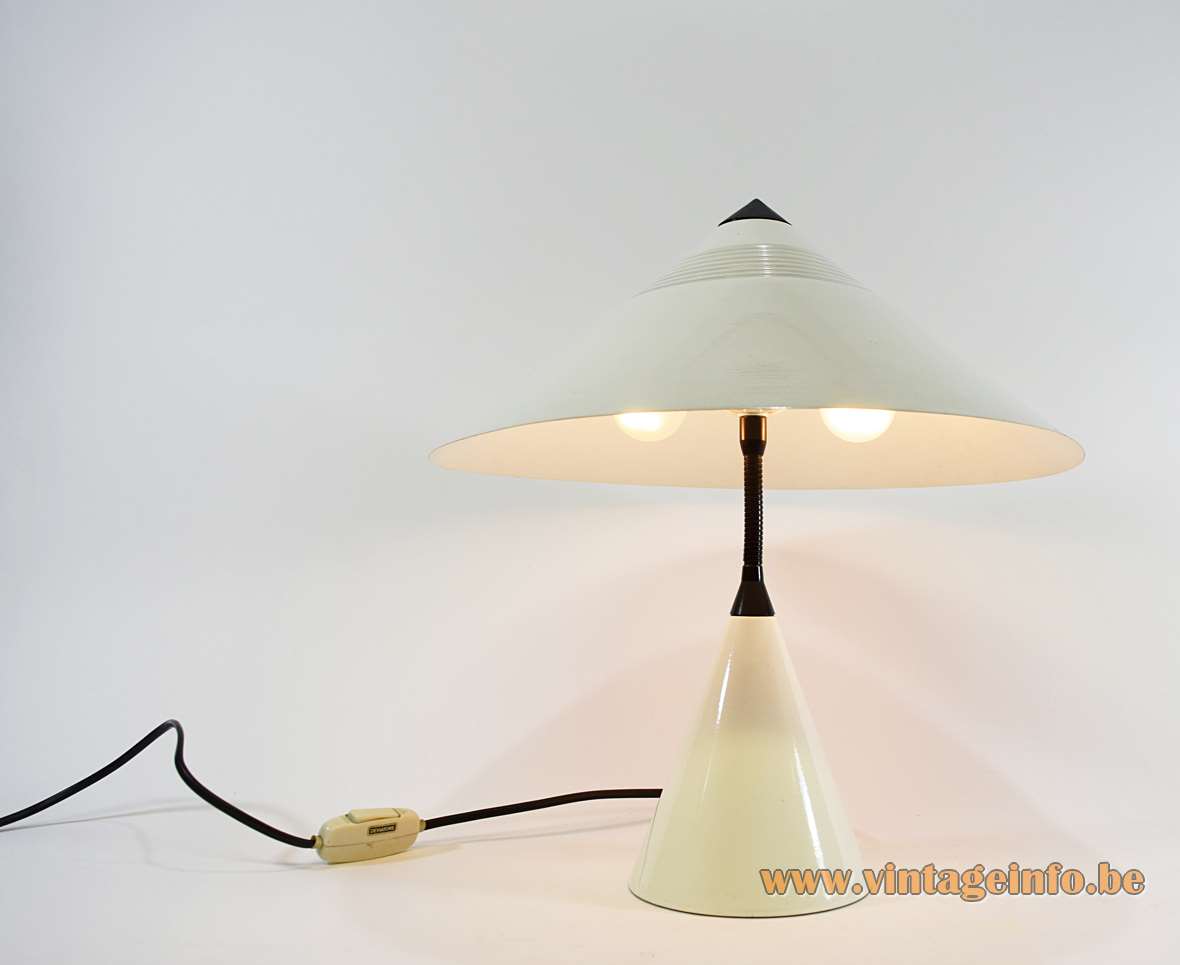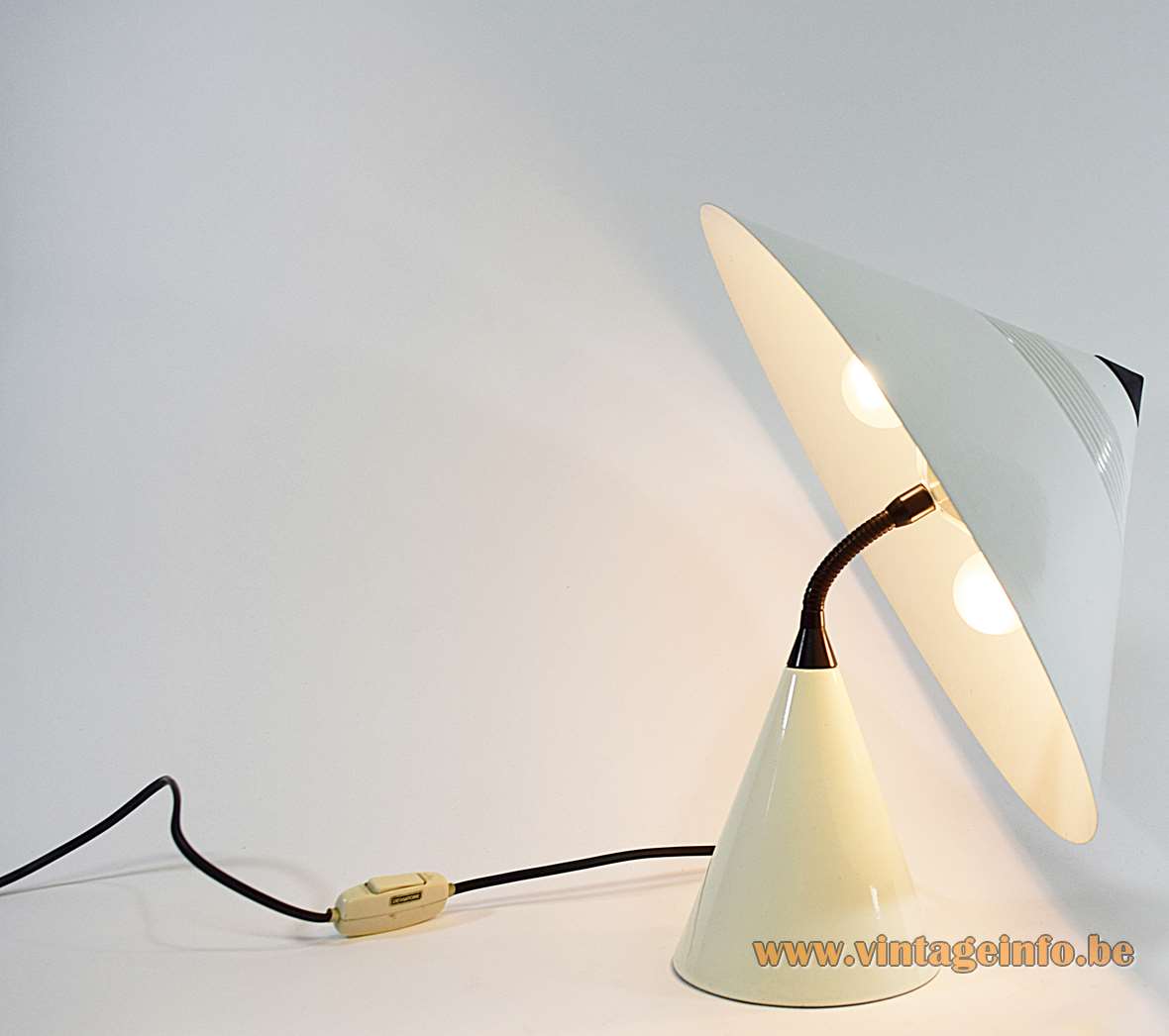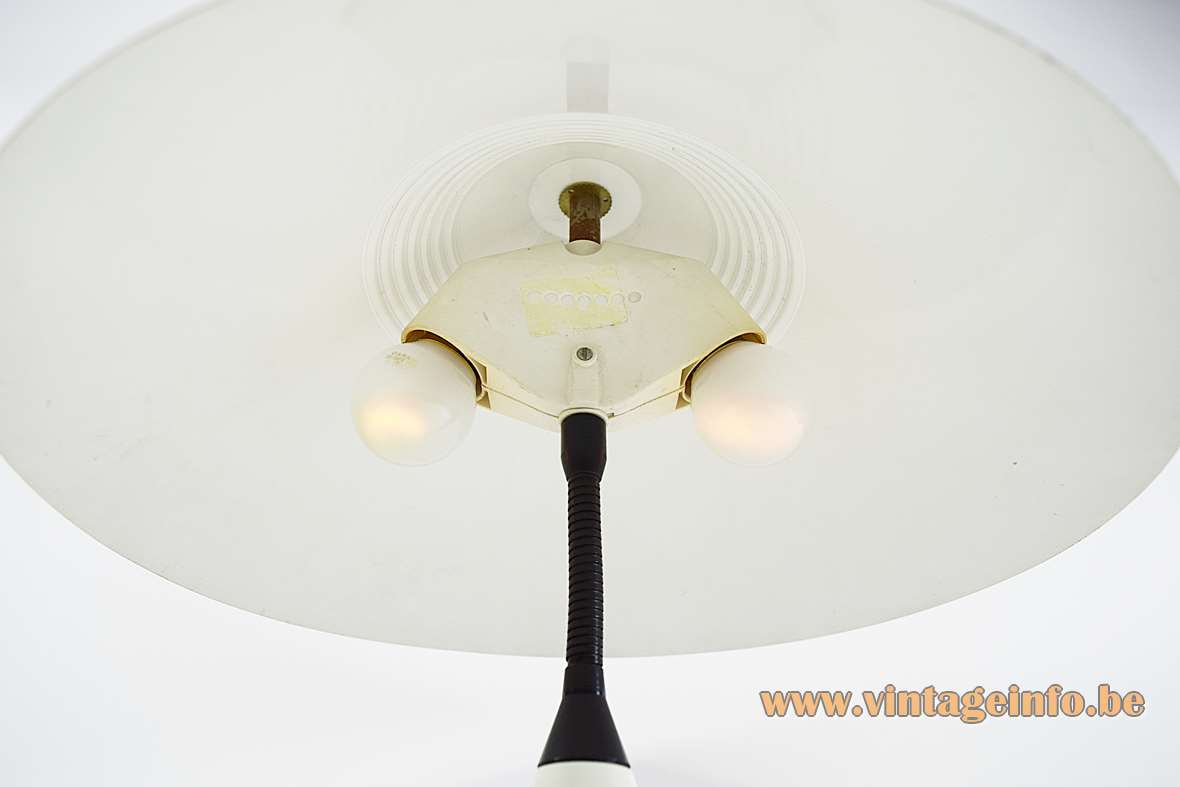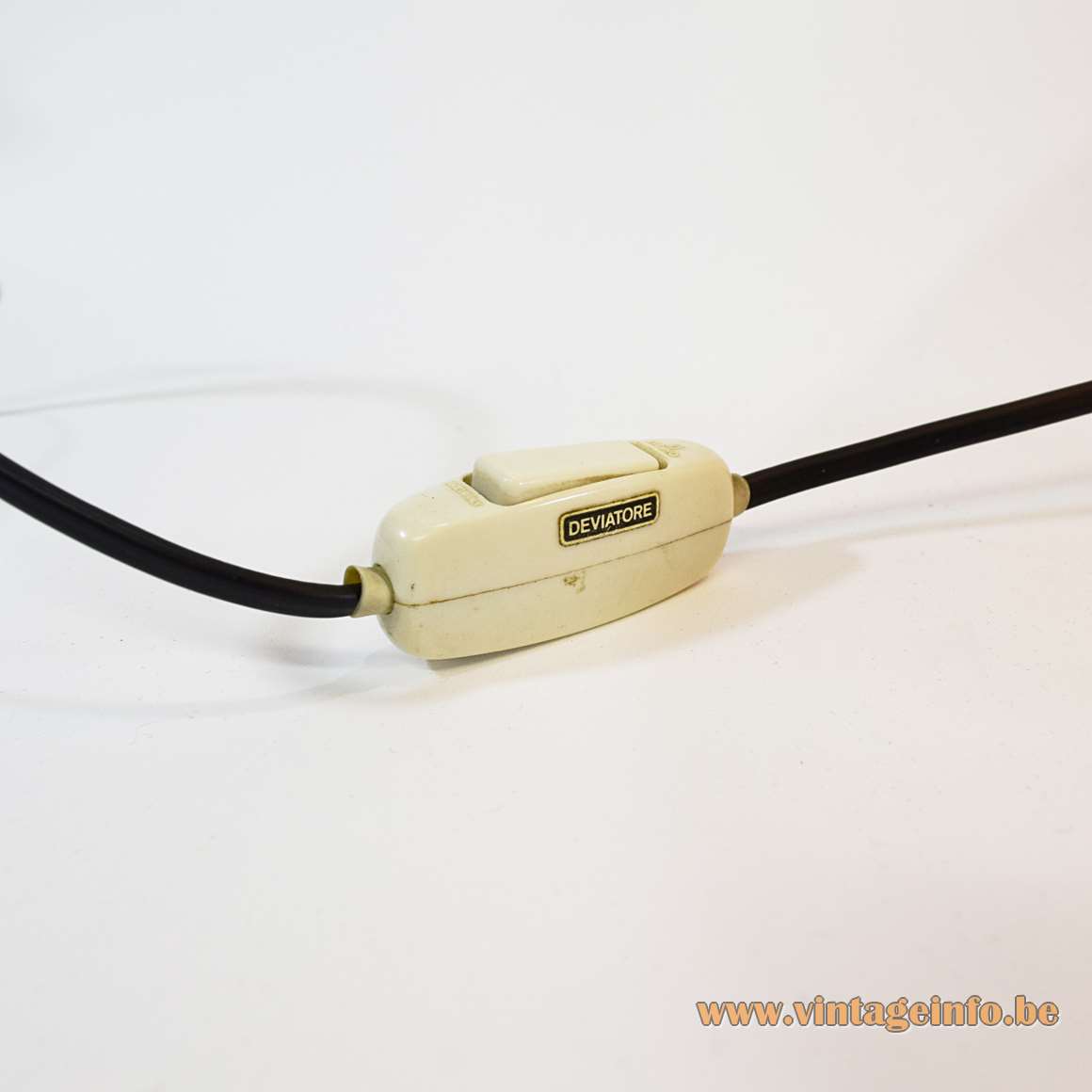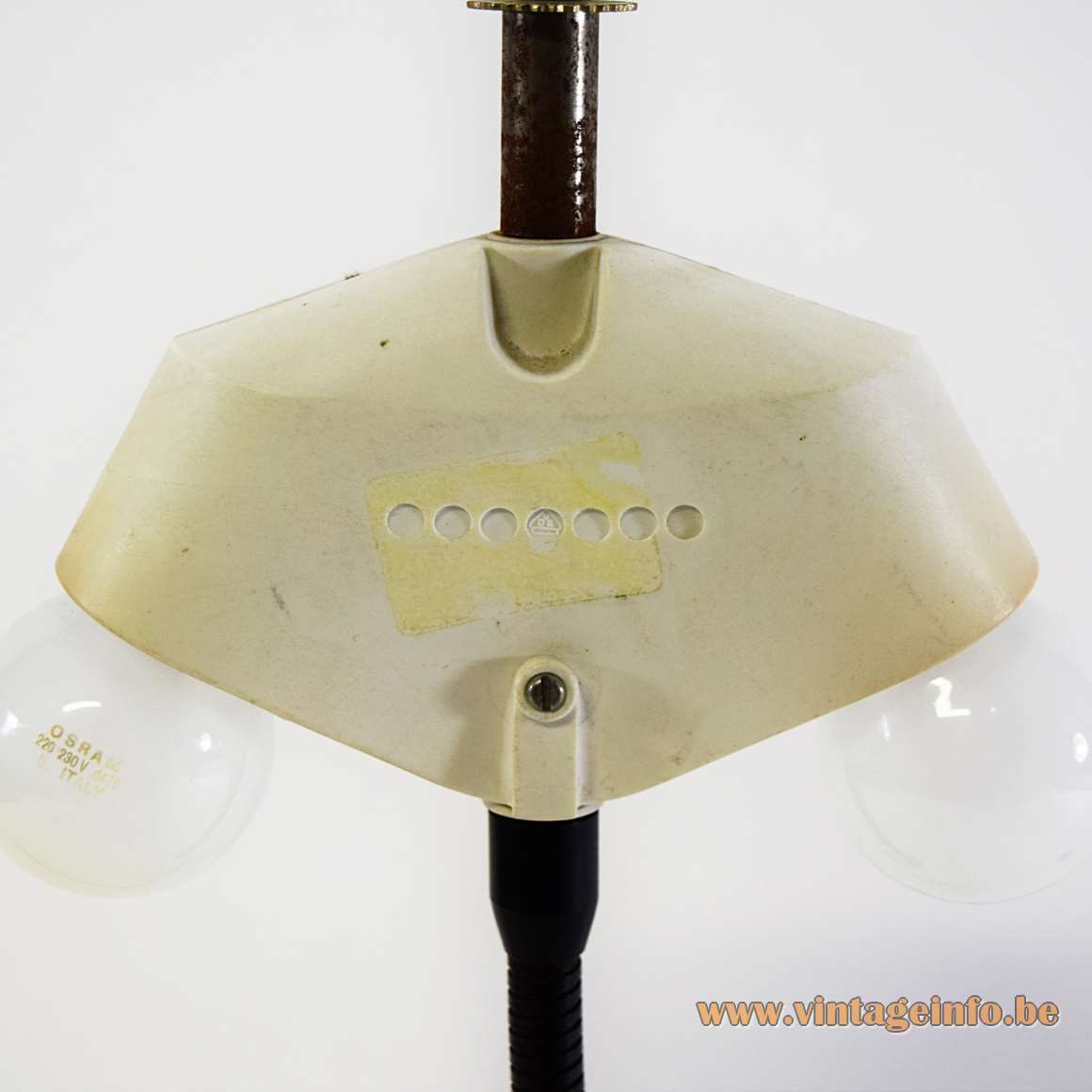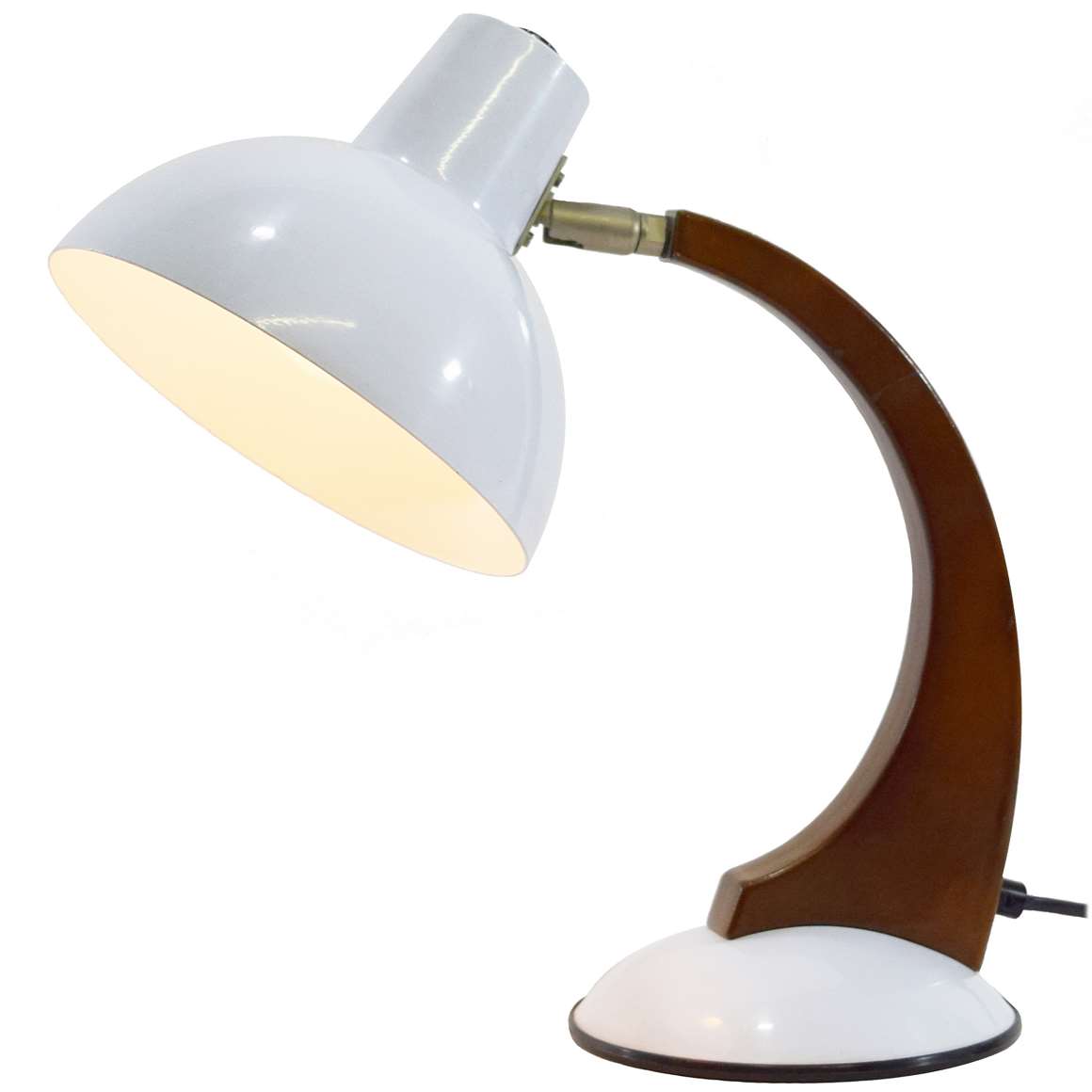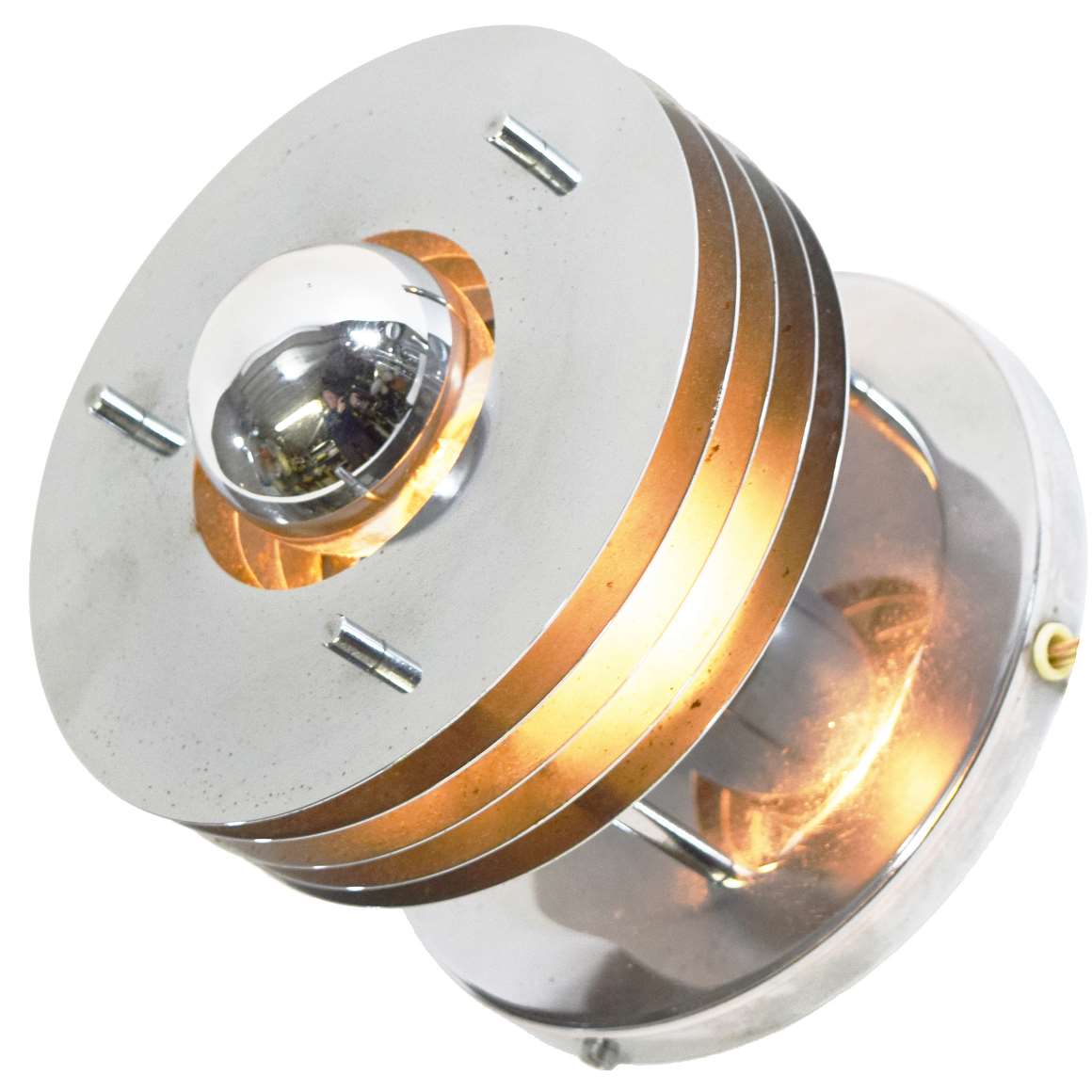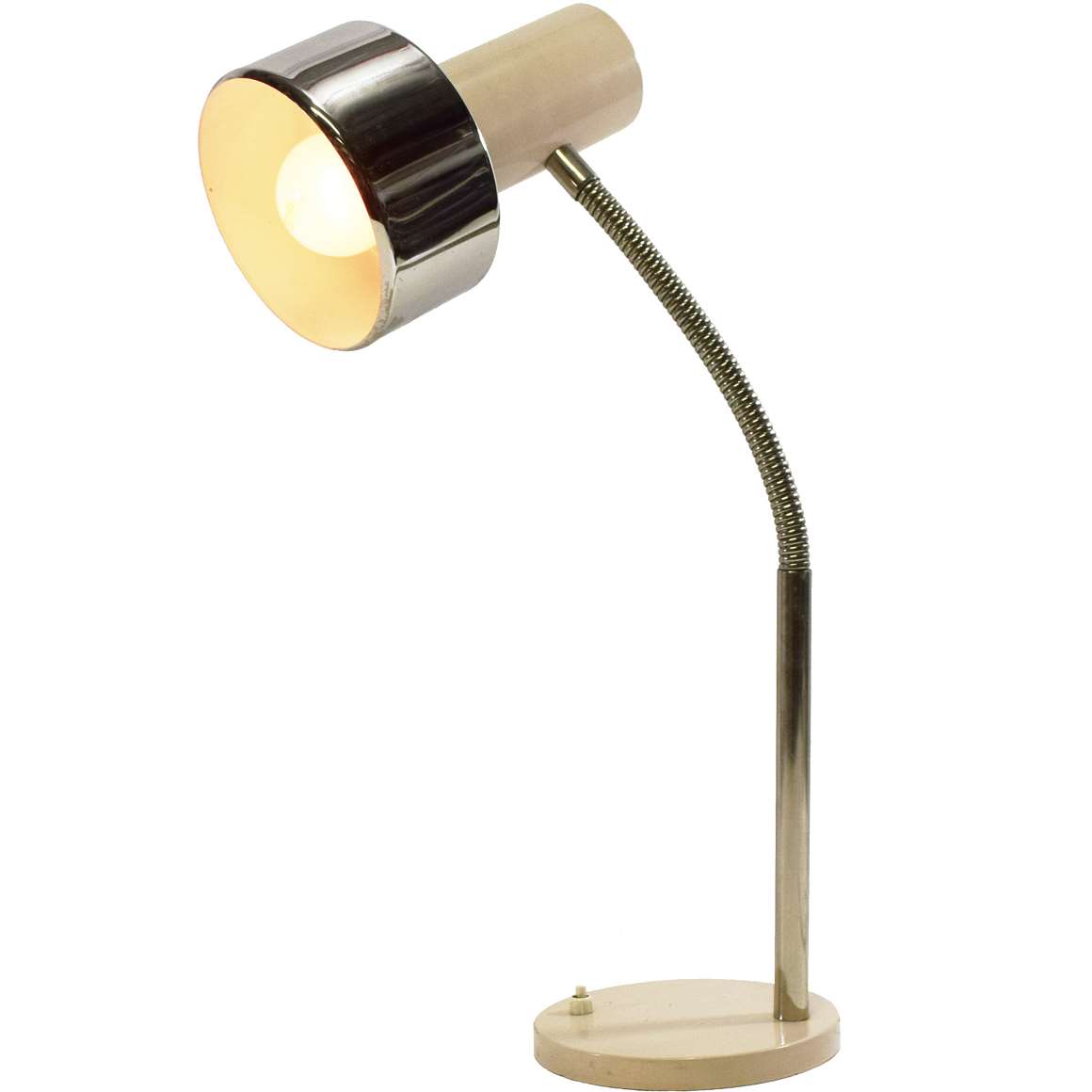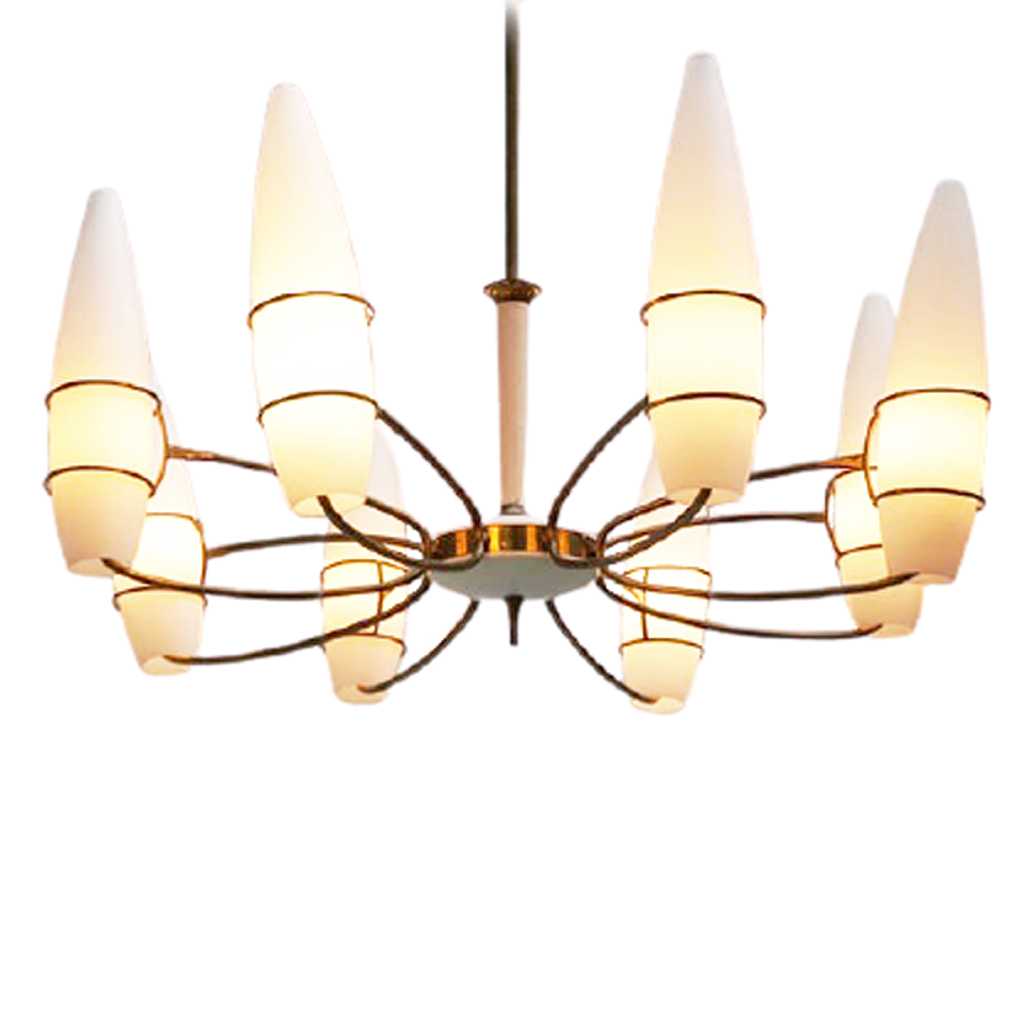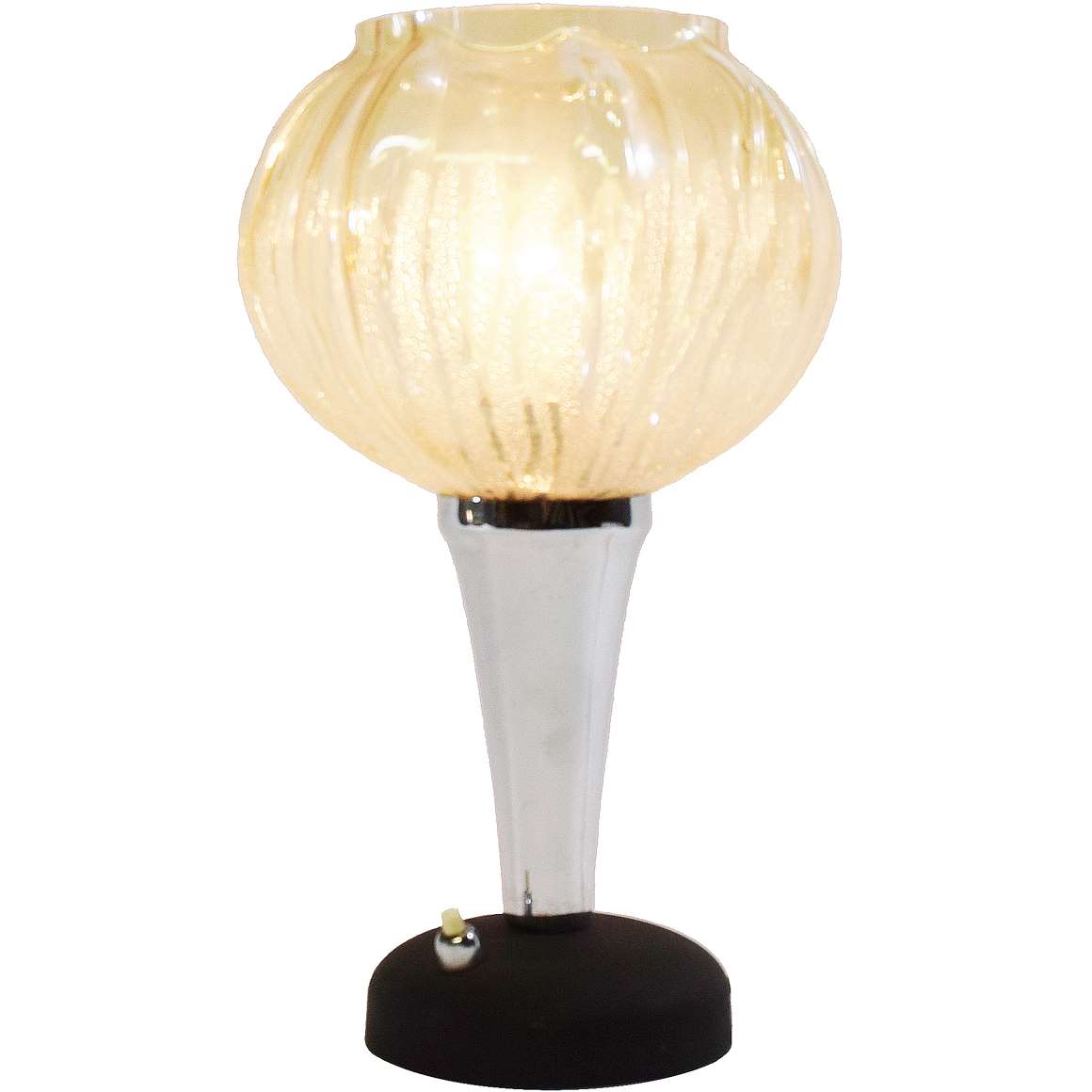1980s White Cone Table Lamp
VLM-Components parts: switch, wire and sockets.
Memphis
The Italian Memphis Group was a design and architecture group founded by Ettore Sottsass (1917-2007) in 1981 in Milan which designed Postmodern furniture, lights, fabrics, ceramics, glass and metal objects from 1981 to 1987.
The name was taken after the Bob Dylan song “Stuck Inside of Mobile with the Memphis Blues Again “. The song was played constantly during the first meeting of the designers on the 11th December 1980.
The group’s members included Andrea Branzi, Aldo Cibic, Alessandro Mendini,Arata Isozaki, BarbaraRadice, Beppe Caturegli, Ettore Sottsass, George Sowden, Gerard Taylor, Giovanni Levanti, Hans Hollein, Javier Mariscal, Laura Agnoletto, Lawrence Laske, Luciano Paccagnella, Marco Susani, Marco Zanini, Marco Zanuso, Maria Sanshez, Martine Bedin, Marzio Rusconi, Massimo Iosa Ghini, Masanori Umeda, Matteo Thun, Michael Graves, Michele de Lucchi, Nathalie du Pasquier, Peter Shire, Shiro Kuramata and Thomas Bley. Ettore Sottsass left the movement in 1985, the Memphis Group disbanded in 1991.
Links (external links open in a new window)
List of screw drives – Wikpedia
www.Memphis-Milano.org (archived)
Ettore Sottsass bio on the Artemide website
Vintageinfo
1980s White Cone Table Lamp
Materials: White painted round pyramid style metal base. Black painted metal goose-neck. White painted conical mushroom lampshade. Black plastic cone on top. White plastic socket holder. Metal and plastic double E27 socket.
Height: 40 cm / 15.74”
Width: ∅ 38 cm / 14.96”
Base: ∅ 13,5 cm / 5.31”
Electricity: 2 bulbs E27, 2 x 60 watt maximum, 110/220 volt.
Anytypeof light bulbs canbeused, not a specific one preferred.
Period: 1980s.
Designer: To be appraised.
Manufacturer: Massive, Mortsel, Kontich and Wommelgem, Belgium.
Other versions: This 1980s white cone table lamp was also made as a pendant lamp and was produced in several colours.
This table lamp is made in the Italian “Memphis” style as they say, but it was produced in Belgium by Massive. The label is missing as you can see, but the remnants of the 1980s label are present. The electric parts are made by VLM Components.
Massive
Origins and Early Growth (1926–1970s)
Massive started in 1926, when Pieter-Jozef De Jaeck founded a bronze foundry in Wilrijk, near Antwerp, Belgium. Initially, the company crafted traditional bronze items such as candlesticks, crucifixes, and chandeliers in-house using established casting methods.
However, as the market evolved during the 1930s and 1940s, Massive quickly adapted to meet changing consumer needs. Therefore, the company gradually introduced more functional lighting products for households. After World War II, electric lighting became more popular across Europe.
Consequently, Massive began combining classic design with modern electrical technology. This strategic shift enabled the brand to reach new customers and grow steadily.
By the 1950s, Massive had earned a solid reputation across Belgium. Its lighting fixtures – often inspired by mid-century trends – were both affordable and practical. Moreover, they were widely available in hardware and furniture stores. As a result, they became a staple in many homes.
In the 1960s, Eddy De Jaeck, the founder’s son, joined the company. He introduced semi-industrial production techniques and optimized logistics. As a result, Massive shifted from a craft-based workshop to a mass production business. This major change laid the groundwork for international expansion.
Design Approach and Product Strategy
Massive became known for producing lighting in the style of more exclusive brands. While they didn’t make direct copies, many of their designs were clearly “inspired” by well-known models. Nevertheless, the company also released some original highlights that stood out in their own right.
In addition to their own production, Massive distributed a significant number of lamps made by other manufacturers. This strategy was not unusual at the time. Many lighting companies across Europe followed the same practice to broaden their product range and appeal to a wider market.
International Expansion and Market Leadership (1970s–2000s)
During the 1970s, Massive expanded rapidly. With Eddy De Jaeck at the helm, and later his sons Piet and Jan De Jaeck, the company grew into a multinational enterprise. To stay affordable and increase volume, Massive moved production to Eastern Europe. Later, it extended manufacturing to China. This deliberate strategy helped the brand stay competitive in a changing market.
By the 1980s, Massive had become one of the top lighting brands in Europe. Its catalog included thousands of options for both indoor and outdoor use. Furthermore, the brand balanced style, affordability, and reliability. Because of this, it gained popularity in both Western and Eastern Europe.
In the Netherlands, Massive began operations in 1962. In addition, the company opened Massive Gorinchem in 1969. This location served as the Dutch headquarters for more than 40 years. Eventually, in late 2012, it relocated to Eindhoven.
Ownership Changes and the Philips Takeover (2002–2010)
In 2002, the De Jaeck family sold Massive to CVC Capital Partners for about €250 million. This move transformed the company into part of the new group, Partners in Lighting International (PLI).
Over the next years, PLI expanded quickly. For example, in 2005, the group acquired Modular Lighting Instruments. Then, in 2006, it added Trio Leuchten from Germany. As a result, PLI marketed over 10,000 products under brands like Massive, Lirio, Trio, Aqua, and Cucina.
The company grew further by employing about 5,000 people and operating in more than 70 countries. In 2007, Royal Philips Electronics announced plans to acquire PLI. The deal closed in 2008, which strengthened Philips ‘ position in the European home lighting market.
Soon afterward, Philips rebranded all Massive stores in Belgium as Light Gallery. By 2014, the Massive name had vanished from packaging and store displays alike.
The End of an Era and the Move to Signify (2010–2024)
After the acquisition, Massive ‘s visibility declined steadily. In 2016, Philips Lighting became a separate, publicly traded company. Then, in 2018, the company rebranded as Signify. This new identity marked a fresh focus on smart and connected lighting.
Eventually, in April 2024, Signify shut down the Light Gallery website and redirected all content to its main platform. Although the Massive name no longer appears in stores, its legacy lives on. Millions of homes throughout Europe still feature its recognizable and timeless lighting designs.
